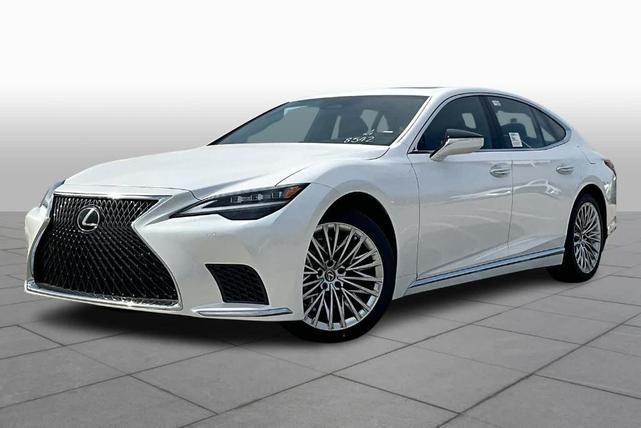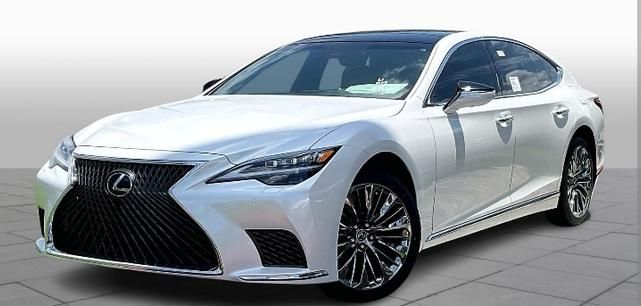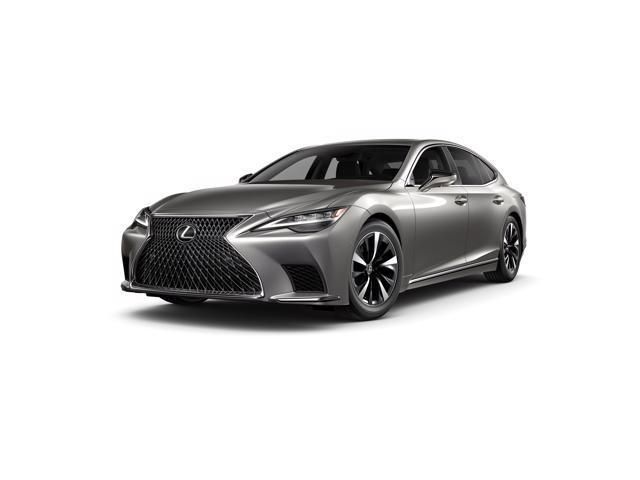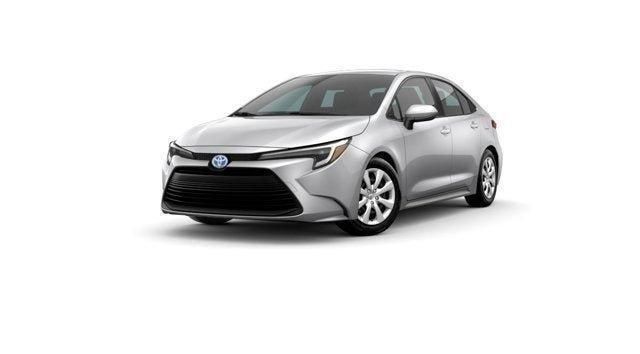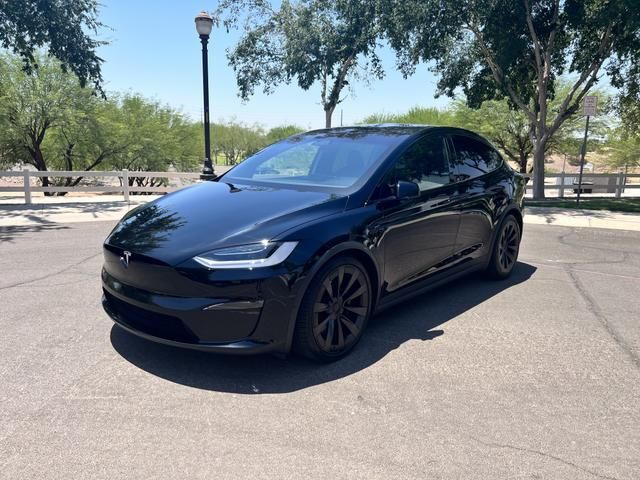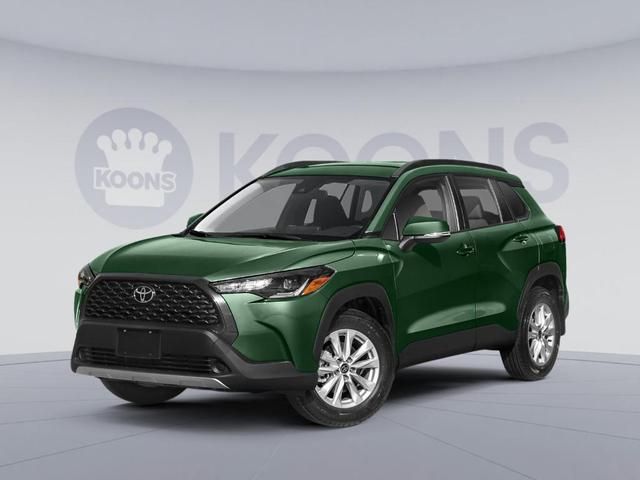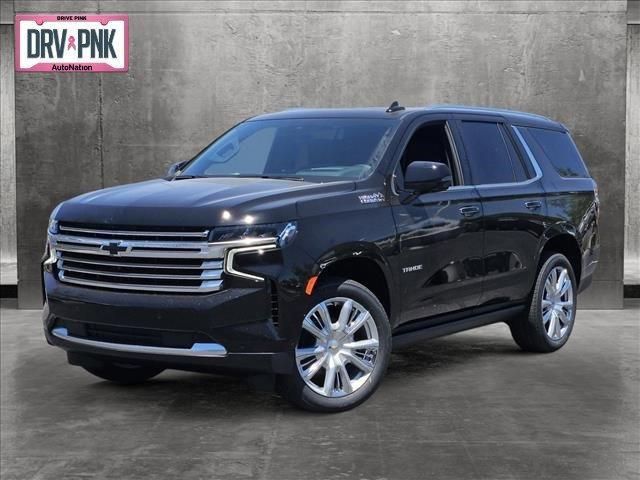
2022 LEXUS LS 500VIN: JTHF51FF9N5016722
Historical Records
Damage to rear
Vehicle involved in a sideswipe collision with another motor vehicle
Airbag deployed
| Year | 2022 |
| ODO | 7720 mi |
| Seller | Hidden text (Hidden text) |
| Location | Raleigh, NC, 27616 |
| Date | appeared 22 days ago latest price $1398 sale post disappeared 2022-04-23 |
| Sale Website Type | classifieds |
| Notes | |
| Hidden text | |



| Body Style | Sedan |
| Transmission | Automatic |
| Engine | 3.5L V-6 port/direct injection, DOHC, VVT-iE/VVT-i variable valv |
| Drive | Rear-wheel Drive |
| Fuel Type | Gasoline |
- 6-Piston Front & 4-Piston Rear Brake Calipers
- Hidden text
- Air conditioning Yes
- Hidden text
- Anti-roll bar front Front anti-roll bar
- Hidden text
- Auto High-Beam Headlights
- Hidden text
- AUTOMATIC BRAKE HOLD
- Hidden text
- Beverage holders rear Rear beverage holders
- Hidden text
- Bulb warning Bulb failure warning
- Hidden text
- Cargo floor type Carpet cargo area floor
- Hidden text
- Cooled Driver Seat
- Hidden text
- Delay-Off Headlights
- Hidden text
- Door mirror with tilt-down in reverse Power driver and passenger door mirror...
- Hidden text
- Driver selectable steering effort Drive Mode Select driver selectable steeri...
- Hidden text
- Electronic parking brake
- Hidden text
- Engine block material Aluminum engine block
- Hidden text
- F SPORT Perforated Leather-Trimmed Seat Trim
- Hidden text
- Fob sunroof controls Keyfob sunroof/convertible roof control
- Hidden text
- Front head restraint control Power front seat head restraint control
- Hidden text
- Front side impact airbag passenger Seat mounted side impact front passenger ...
- Hidden text
- Grille style Black grille
- Hidden text
- Heated Door Mirrors
- Hidden text
- Illuminated Glove Box
- Hidden text
- Key in vehicle warning
- Hidden text
- Lane Departure Warning
- Hidden text
- Low Tire Pressure Warning
- Hidden text
- Noise cancellation Active noise cancellation
- Hidden text
- One-touch down window Front and rear one-touch down windows
- Hidden text
- Paint Clearcoat paint
- Hidden text
- Pedestrian detection Pre-Collision System (PCS) w/Pedestrian Detection
- Hidden text
- Power passenger seat controls Passenger seat power reclining, lumbar support...
- Hidden text
- Radio data system
- Hidden text
- Rear bench seats Rear bench seat
- Hidden text
- Rear seat center armrest
- Hidden text
- Rearview mirror Auto-dimming rear view mirror
- Hidden text
- seating capacity 5
- Hidden text
- Speakers Pioneer speakers
- Hidden text
- Split front seats Bucket front seats
- Hidden text
- Steering Wheel Memory
- Hidden text
- Suspension type front Multi-link front suspension
- Hidden text
- Traction Control
- Hidden text
- Trunk lid trim Carpet trunk lid trim
- Hidden text
- Variable Intake Manifold
- Hidden text
- Visor passenger expandable coverage Passenger visor with expandable coverage...
- Hidden text
- Wipers Variable intermittent front windshield wipers
- 6950
- AM/FM radio: SiriusXM
- Hidden text
- Aluminum Door Trim
- Hidden text
- Armrests front center Front seat center armrest
- Hidden text
- Auto-Dimming Rear-View Mirror
- Hidden text
- Backup camera
- Hidden text
- Bodyside insert Black bodyside insert
- Hidden text
- Bumpers: Body-Color
- Hidden text
- Climate control Automatic climate control
- Hidden text
- Cruise control Cruise control with steering wheel mounted controls
- Hidden text
- Door bins front Driver and passenger door bins
- Hidden text
- Driver Attention Monitor
- Hidden text
- Dual Front Impact Airbags
- Hidden text
- Emissions LEV3-ULEV70 emissions
- Hidden text
- External memory External memory control
- Hidden text
- Floor console Full floor console
- Hidden text
- Four Wheel Independent Suspension
- Hidden text
- Front passenger lumbar Front passenger seat with 4-way power lumbar
- Hidden text
- Fully Automatic Headlights
- Hidden text
- Headlights LED low and high beam headlights
- Hidden text
- Heated Steering Wheel
- Hidden text
- Integrated navigation Integrated navigation system with voice activation
- Hidden text
- Keyless Start
- Hidden text
- Leather Steering Wheel
- Hidden text
- Memory Seat
- Hidden text
- Number of doors 4 doors
- Hidden text
- Overdrive Transmission
- Hidden text
- Parking sensors Intuitive Parking Assist front and rear parking sensors
- Hidden text
- Power Adjustable Front Head Restraints
- Hidden text
- Powertrain warranty 72 month/70,000 miles
- Hidden text
- Real time traffic Real-time traffic
- Hidden text
- Rear console climate control ducts
- Hidden text
- Rear seats fixed or removable Fixed rear seats
- Hidden text
- Running lights LED daytime running lights
- Hidden text
- Selectable mode transmission Drive Mode Select selectable mode transmission
- Hidden text
- Speed sensitive steering Speed sensitive power steering
- Hidden text
- Stability Control
- Hidden text
- Sunroof/Moonroof
- Hidden text
- Telescoping Steering Wheel
- Hidden text
- Transmission Type Automatic
- Hidden text
- Turn Signal Indicator Mirrors
- Hidden text
- Ventilated brakes Front and rear ventilated disc brakes
- Hidden text
- WiFi Hotspot
- Hidden text
- 12V power outlets 3 12V power outlets
- Hidden text
- Adaptive Cruise Control
- Hidden text
- Amplifier 300W amplifier
- Hidden text
- Armrests rear storage Rear seat center armrest storage
- Hidden text
- Auto-dimming door mirror passenger Auto-dimming passenger side mirror
- Hidden text
- Battery charge warning
- Hidden text
- Brake Assist
- Hidden text
- CD location CD player located in the dashboard/instrument panel
- Hidden text
- Compass
- Hidden text
- DVD-Audio
- Hidden text
- Door handle material Chrome door handles
- Hidden text
- Driver Foot Rest
- Hidden text
- Dual Sunroof
- Hidden text
- Engine 3.5L V-6 port/direct injection, DOHC, VVT-iE/VVT-i variable valve con...
- Hidden text
- F SPORT Exterior Styling
- Hidden text
- Floor coverage Full floor coverage
- Hidden text
- Front Center Armrest
- Hidden text
- Front seat type Sport front bucket seats
- Hidden text
- Garage door opener HomeLink garage door opener
- Hidden text
- Headliner coverage Full headliner coverage
- Hidden text
- High mount stop light High mounted center stop light
- Hidden text
- Interior courtesy lights Fade interior courtesy lights
- Hidden text
- Knee airbag Driver and passenger side knee airbag
- Hidden text
- Lexus Premium Audio System
- Hidden text
- Memory settings Memory settings include: door mirrors, steering wheel and fr...
- Hidden text
- Number of memory settings 3 memory settings
- Hidden text
- Overhead airbags Curtain first and second-row overhead airbags
- Hidden text
- Passenger doors rear left Conventional left rear passenger door
- Hidden text
- Power Driver Seat
- Hidden text
- Primary display touchscreen Primary monitor touchscreen
- Hidden text
- Rear Cross Traffic Alert
- Hidden text
- Rear head restraint control Manual rear seat head restraint control
- Hidden text
- Rear side impact airbag Rear side impact airbags
- Hidden text
- Satellite trial 3 month satellite trial subscription
- Hidden text
- Service interval warning Service interval indicator
- Hidden text
- Speed Sensitive Wipers
- Hidden text
- Steering mounted audio control Steering wheel mounted audio controls
- Hidden text
- Suspension auto correcting Adaptive Variable Suspension (AVS) adaptive ride ...
- Hidden text
- Tilt steering wheel
- Hidden text
- Transmission fluid temperature warning Transmission fluid temp warning
- Hidden text
- USB Port
- Hidden text
- Visor driver expandable coverage Driver visor with expandable coverage
- Hidden text
- Wheels: 20in Split 5-Spoke Alloy
- Hidden text
- 3-point seatbelt Rear seat center 3-point seatbelt
- Hidden text
- Adaptive Cruise Control All-Speed Dynamic RADAR Cruise Control (Drcc)
- Hidden text
- Android Auto
- Hidden text
- Auto High-Beam Headlights
- Hidden text
- Auto-Dimming Door Mirrors
- Hidden text
- Battery run down protection
- Hidden text
- Brake assist system Predictive brake assist system
- Hidden text
- CD Player
- Hidden text
- Compressor Twin turbo
- Hidden text
- DVD-audio DVD-audio playback capability
- Hidden text
- Door locks Power door locks with 2 stage unlocking
- Hidden text
- Driver Information Center
- Hidden text
- Dual-Zone Front Climate Control
- Hidden text
- Engine Cylinders V6
- Hidden text
- F SPORT Heated & Ventilated Front Bucket Seats
- Hidden text
- Floor covering Full carpet floor covering
- Hidden text
- Front Anti-Roll Bar
- Hidden text
- Front seat upholstery Leather front seat upholstery
- Hidden text
- Garage Door Transmitter: Homelink
- Hidden text
- Headliner material Ultrasuede simulated suede headliner material
- Hidden text
- Hill Start Assist
- Hidden text
- Internal storage Internal storage capability
- Hidden text
- LCD primary display size 12.3 inch primary LCD display
- Hidden text
- License plate front bracket Front license plate bracket
- Hidden text
- Multiple headlights Multiple enclosed headlights
- Hidden text
- Occupancy sensor Airbag occupancy sensor
- Hidden text
- Overhead console
- Hidden text
- Passenger doors rear right Conventional right rear passenger door
- Hidden text
- Power driver seat controls Driver seat power reclining, lumbar support, cush...
- Hidden text
- RDS Radio data system (RDS)
- Hidden text
- Rear Springs Regular grade rear springs
- Hidden text
- Rear head restraints Height and tilt adjustable rear seat head restraints
- Hidden text
- Rear under seat ducts Rear under seat climate control ducts
- Hidden text
- Seatback storage pockets 2 seatback storage pockets
- Hidden text
- Shifter boot Leatherette shifter boot
- Hidden text
- Speed-Sensitive Wipers
- Hidden text
- Steering type Rack-pinion steering
- Hidden text
- Suspension control Automatic suspension ride control with driver control
- Hidden text
- Tinted windows Light tinted windows
- Hidden text
- Trip Computer
- Hidden text
- USB ports 1 USB port
- Hidden text
- Visor driver mirror Driver visor mirror
- Hidden text
- Window Trim Chrome side window trim
- 9539
- 3.5L V6 DOHC 24-Valve Twin-Turbo Engine
- Hidden text
- Adaptive Suspension
- Hidden text
- Antenna Diversity antenna
- Hidden text
- Auto door locks Auto-locking doors
- Hidden text
- Auto-Latch Doors
- Hidden text
- Battery type Lead acid battery
- Hidden text
- Brake pad warning Brake pad wear indicator
- Hidden text
- Cabin air filter
- Hidden text
- Configurable Instrumentation Gauges
- Hidden text
- Day/night rearview mirror
- Hidden text
- Door mirror style Body-colored door mirrors
- Hidden text
- Driver lumbar Driver seat with 4-way power lumbar
- Hidden text
- Eco Feedback ECO feedback display gage
- Hidden text
- Engine Location Front mounted engine
- Hidden text
- F Sport Perforated Leather Heated Steering Wheel
- Hidden text
- Floor mats Carpet front and rear floor mats
- Hidden text
- Front cornering lights
- Hidden text
- Front seatback upholstery Leatherette front seatback upholstery
- Hidden text
- Gearshifter material Leather and metal-look gear shifter material
- Hidden text
- Heated Seats
- Hidden text
- Ignition Spark ignition system
- Hidden text
- Internet access Enform Wi-Fi (complimentary 4 GB trial for 3 months) mobile ...
- Hidden text
- LED brake lights
- Hidden text
- Lock-up transmission
- Hidden text
- Navigation System
- Hidden text
- Occupant Sensing Airbag
- Hidden text
- Overhead console Mini overhead console
- Hidden text
- Passenger seat direction Front passenger seat with 16-way directional contro...
- Hidden text
- Power Moonroof
- Hidden text
- radiator
- Hidden text
- Rear Window Blind
- Hidden text
- Rear headliner/pillar ducts Rear headliner/pillar climate control ducts
- Hidden text
- Rear Window Defroster
- Hidden text
- Seatbelt pretensioners Front seatbelt pretensioners
- Hidden text
- Shock absorbers Gas-pressurized shock absorbers
- Hidden text
- Speed-Sensing Steering
- Hidden text
- Steering type number of wheels 2-wheel steering system
- Hidden text
- Suspension ride type front Independent front suspension
- Hidden text
- Tires P245/45VR20 run-flat performance BSW front tires and P275/40VR20 run-f...
- Hidden text
- Trip odometer
- Hidden text
- ultrasuede headliner
- Hidden text
- Visor illuminated driver mirror Illuminated driver visor mirror
- Hidden text
- Windshield blind Power rear windshield blind
VIN Decoder — 61 records
Anti-lock Braking System (ABS) means a portion of a service brake system that automatically controls the degree of rotational wheel slip during braking by: (1) Sensing the rate of angular rotation of the wheels; (2) Transmitting signals regarding the rate of wheel angular rotation to one or more controlling devices that interpret those signals and generate responsive controlling output signals; and (3) Transmitting those controlling signals to one or more modulator devices that adjust brake actuating forces in response to those signals.
An auto-reverse system enables power windows and sunroofs on motor vehicles to automatically reverse direction when such power windows and panels detect an obstruction. This feature can prevent children and others from being trapped, injured, or killed by the power windows and sunroofs.
ESC is a computerized technology that improves a vehicle's stability by detecting and reducing loss of traction (skidding). When ESC detects loss of steering control, it automatically applies the brakes to help steer the vehicle in the driver's intended direction. Braking is automatically applied to wheels individually, such as the outer front wheel to counter oversteer, or the inner rear wheel to counter understeer. Some ESC systems also reduce engine power until control is regained.
A keyless ignition system permits starting a car without a physical key being inserted into an ignition. Instead, a small device known as a "key fob" transmits a code to a computer in the vehicle when the fob is within a certain close range. When the coded signal matches the code embedded in the vehicle's computer, a number of systems within the car are activated, including the starter system. This allows the car to be started by simply pressing a button on the dashboard while the key fob is left in a pocket or a purse. The vehicle is usually shut down by pushing the same button.
A TPMS is an electronic system designed to monitor the air pressure inside the pneumatic tires on various types of vehicles. TPMS can be divided into two different types - direct and indirect. Direct TPMS employ pressure sensors on each wheel, either internal or external. The sensors physically measure the tire pressure in each tire and report it to the vehicle's instrument cluster or a corresponding monitor. Indirect TPMS does not use physical pressure sensors but measure air pressures by monitoring individual wheel rotational speeds and other signals available outside of the tire itself.
When the traction control computer detects a driven wheel or wheels spinning significantly faster than another, it invokes an electronic control unit to apply brake friction to wheels spinning due to loss of traction. This braking action on slipping wheels will cause power transfer to the wheels with traction due to the mechanical action within the differential.
A backup camera, also known as a rearview video system, helps prevent back-over crashes and protects our most vulnerable people - children and senior citizens - by providing an image of the area behind the vehicle. A backup camera helps the driver see behind the vehicle while in reverse.
A parking assist system uses computer processors, back up cameras, surround-view cameras, and sensors to assist with steering and other functions during parking. Drivers may be required to accelerate, brake, or select gear position. Some systems are capable of parallel and perpendicular parking. Drivers must constantly supervise this support feature and maintain responsibility for parking.
A CIB system is an automatic emergency braking system designed to detect an impending forward crash with another vehicle. CIB systems automatically apply the brakes in a crash imminent situation to slow or stop the vehicle, avoiding the crash or reducing its severity, if the driver does not brake in response to a forward collision alert.
A DBS system is an automatic emergency braking system designed to detect an impending forward crash with another vehicle. DBS systems automatically supplement the driver's braking in an effort to avoid a crash if the driver does not brake hard enough to avoid it.
An FCW system monitors a vehicle's speed, the speed of the vehicle in front of it, and the distance between the vehicles. If the vehicles get too close due to the speed of either vehicle, the FCW system will warn the driver of the rear vehicle of an impending crash so that the driver can apply the brakes or take evasive action, such as steering, to prevent a potential crash. FCW systems provide an audible, visual, or haptic warning, or any combination thereof, to alert the driver of an FCW-equipped vehicle of a potential collision.
BSI helps prevent a collision with a vehicle in the driver's blind spot. If the driver ignores the blind spot warning and starts to change to a lane where there's a vehicle, the system activates and automatically applies light braking pressure, or provides steering input, to guide the vehicle back into the original lane. The system monitors for vehicles in the driver's blind spot using rear-facing cameras or proximity sensors.
BSW alerts drivers with an audio or visual warning if there are vehicles in adjacent lanes that the driver may not see when making a lane change.
A lane centering assistance system utilizes a camera-based vision system designed to monitor the vehicle's lane position and automatically and continuously apply steering inputs needed to keep the vehicle centered within its lane.
An LDW system monitors lane markings and alerts the driver if their vehicle drifts out of their lane without a turn signal or any control input indicating the lane departure is intentional. An audio, visual or other alert warns the driver of the unintentional lane shift so the driver can steer the vehicle back into its lane.
An LKA system prevents a driver from unintentionally drifting out of the intended travel lane. LKA systems use information provided by Lane Departure Warning (LDW) system sensors to determine whether a vehicle is about to unintentionally move out of its lane of travel. If so, LKA activates and corrects the steering, brakes or accelerates one or more wheels, or does both, resulting in the vehicle returning to its intended lane of travel.
ADB is a type of front-lighting system that lets upper beam headlamps adapt their beam patterns to create shaded areas around oncoming and preceding vehicles to improve long-range visibility for the driver without causing discomfort, distraction, or glare to other road users.
DRL is an automotive lighting system on the front of a vehicle or bicycle, that automatically switches on when the vehicle is in drive, and emits white, yellow, or amber light to increase the conspicuity of the vehicle during daylight conditions.
A headlamp light source provides a distribution of light designed to provide adequate forward and lateral illumination with limits on light directed towards the eyes of other road users, to control glare. This beam is intended for use whenever other vehicles are present ahead. Halogen, high-Intensity discharge (HID), light-emitting diode (LED), and laser are the most common headlights on the market.
A semi-automatic headlamp beam switching device provides automatic or manual control of beam switching at the option of the driver. When the control is automatic, the headlamps switch from the upper beam to the lower beam when illuminated by the headlamps on an approaching car and switch back to the upper beam when the road ahead is dark. When the control is manual, the driver may obtain either beam manually regardless of the condition of lights ahead of the vehicle.
Engine displacement (in cubic centimeters) is the volume swept by all the pistons inside the cylinders of a reciprocating engine in a single movement from top dead center to bottom dead center.
Engine displacement (in cubic inches) is the volume swept by all the pistons inside the cylinders of a reciprocating engine in a single movement from top dead center to bottom dead center.
Engine displacement (in liters) is the volume swept by all the pistons inside the cylinders of a reciprocating engine in a single movement from top dead center to bottom dead center.
Engine brake is the horsepower (hp) at the engine output shaft. Engine Brake (hp) From is the lower value of the range.
Engine configuration defines how engine cylinders are arranged. Common values are V6 for V-shaped arrangement, I4 or L4 for in-line arrangement.
This is a numerical field to store the number of cylinders in an engine. Common values for passenger cars are 4 or 6.
Body Class presents the body type based on 49 CFR 565.12(b): "Body type means the general configuration or shape of a vehicle distinguished by such characteristics as the number of doors or windows, cargo-carrying features and the roofline (e.g., sedan, fastback, hatchback)." Definitions are not provided for individual body types in the regulation.
Gross vehicle weight rating (GVWR) is the maximum operating weight of a vehicle including the vehicle's chassis, body, engine, engine fluids, fuel, accessories, driver, passengers and cargo, but excluding that of the trailers. Per 49 CFR 565.15, Class 1 is further broken down to Class A-D; Class 2 is further broken down to Class E-H. This field captures the lower bound of GVWR range for the vehicle.
Gross vehicle weight rating (GVWR) is the maximum operating weight of a vehicle including the vehicle's chassis, body, engine, engine fluids, fuel, accessories, driver, passengers and cargo, but excluding that of the trailers. Per 49 CFR 565.15, Class 1 is further broken down to Class A-D; Class 2 is further broken down to Class E-H. This field captures the higher bound of GVWR range for the vehicle.
Per 49 CFR 565, Model means a name that a manufacturer applies to a family of vehicles of the same type, make, line, series and body type.
If the model year (MY) is supplied when the VIN is decoded, such as from a crash report or a vehicle registration record, the MY value will be the supplied MY, even if the MY decoded from the VIN differs from the supplied MY. If the MY is not supplied when the VIN is decoded, the MY value will be decoded from the 10th character in the VIN.
This data element captures the city of the manufacturing plant where the manufacturer affixes the VIN.
This data element captures the name of the company that owns the manufacturing plant where the manufacturer affixes the VIN.
This data element captures the country of the manufacturing plant where the manufacturer affixes the VIN.
This data element captures the State or Province name within the Plant Country of the manufacturing plant where the manufacturer affixes the VIN.
Per 49 CFR 565, Series means a name that a manufacturer applies to a subdivision of a "line" denoting price, size or weight identification and that is used by the manufacturer for marketing purposes.
This field captures the location of curtain air bags. Curtain air bags are side air bags that protect the head.
This field captures the location of frontal air bags. Frontal air bags are generally designed to deploy in "moderate to severe" frontal or near-frontal crashes.






